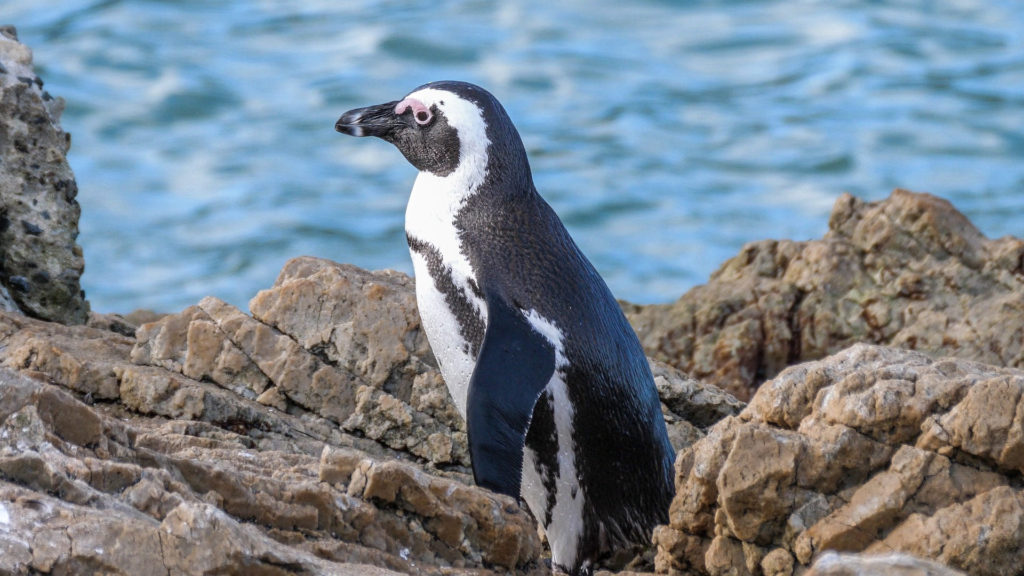
The African Penguin(Spheniscus demersus), also known as the Cape Penguin, Black-Footed Penguin, Jackass Penguin, or the South African Penguin is classified in the avian order Sphenisciformes, and family Spheniscidae. The International Union for the Conservation of Nature currently lists the African Penguin as endangered.
| Genus | Spheniscus |
| Species | S. demersus |
| Binomial Name | Spheniscus demersus |
| Length | 60-70 cm(1’11.6”-2’3.6”) |
| Weight | 2.1-3.7 kg(4.6-8.2 lbs.) |
| Diet | carnivore |
| IUCN Status | endangered |
Physical Characteristics
An adult African Penguin’s back is black; it’s torso is white with a black horseshoe shaped band across its upper chest and down through its sides. There is a bare pink ring around each eye and a pink patch from each eye to the bill. The bill is black but the tip of the bill is sometimes dark grey. There is a pale ring near the tip of the bill. Most of the face is black. The legs are blackish, but are often marked with pale pink.
Range And Habitat
The African Penguin lives year round in Namibia and South Africa. This species can also be seen in Angola, DRC, Gabon, and Mozambique. African Penguins inhabit marine areas.
Breeding
The African Penguin nests in either a burrow that is dug in sand or guano, or in sand under boulders or bushes. The mother lays a clutch of 2 eggs; the parents share the duty of incubating the eggs for a period of 38 days. The African Penguin reaches sexual maturity at 4 years old.
Diet
African Penguins eat fish, krill, squid, and shrimp.
Predators
African Penguins are preyed on by sharks, fur seals, the Kelp Gull(Larus dominicanus), mongooses, the Caracal(Caracal caracal), domestic cats, and domestic dogs.
Definitions
Guano is the poop of seabirds and bats.
Fun Facts
- The maximum dive by an African Penguin ever recorded was 130 meters(426.5 feet) deep.
- The African Penguin is also known as the Jackass Penguin due to the donkey-like noise made by this species.
- African Penguins can live for up to 30 years.
.
